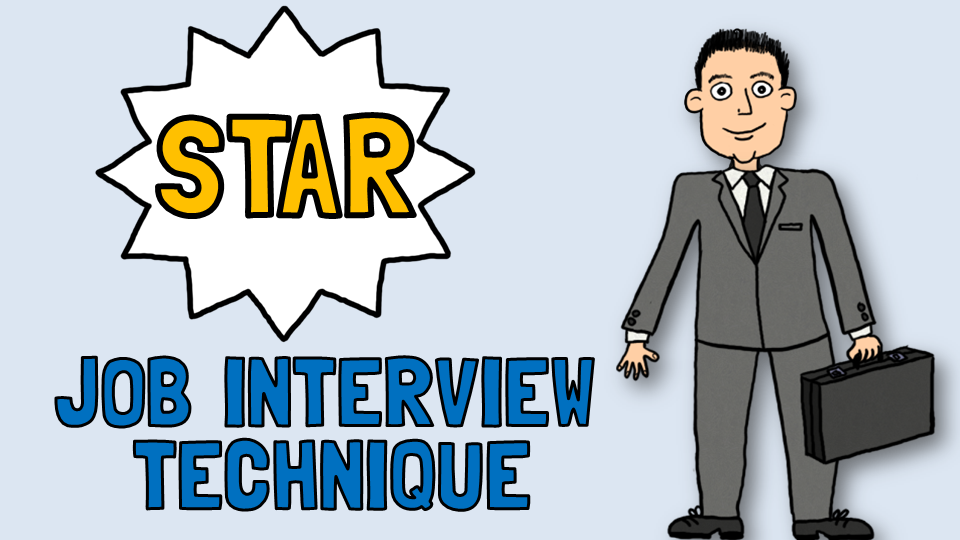If you want to be a star, use the STAR technique!
The STAR technique is one of the key techniques in a job interview, and is called “Behavior based interviewing”. The theory behind this technique is that the best indicator of future behavior comes from a past behavior.
When an interviewer asks you to describe a situation in which you were involved, they are looking at how you are responding using a specific example. Think STAR!
The STAR model breaks answers into four segments:
S – the situation and its description
T – Task
A – Action you took
R – Results that are measurable
It’s very important that all aspects of the STAR method are being used effectively!
It won’t help if you don’t thoroughly describe your situation but forget to indicate your results. Likewise it’s of no good explaining how it went if you haven’t first given a clear picture of a situation and the role you played in solving the problem.
Here are some examples!
Interviewer: Marc, could you please provide us with an example of a difficult situation or problem that you have faced? Explain exactly what happened, how did you handle it and what was the outcome?
Marc: Well…Whenever a difficult thing comes up, I always manage to get it right with a good end results.
Interviewer: Great! Good for you. But, can you give us some specific example to understand this better?
Marc: Sure. Once, I had an extremely difficult situation when I was a Team leader, and I had to solve a lot of assignments with squeezed deadlines. I managed to do it myself, and I was actually very proud of myself!
When we look at his answer, Marc wasn’t thinking STAR. No specific situation or task was described. No specificaction was given. And no result was shown.
Marc summed up the results by saying that the excellent job was all due to his hard work.
Remember:
No one will hire you if you cannot give a clear example of what you did in past. So be specific and mold your story around STAR method (Situation/Task; Action; Result).
Let’s look at this good example
Interviewer: Jenny, could you please provide us with an example of a difficult situation or problem that you have faced? Explain exactly what happened, how you handle it and what was the outcome?
Jenny: First thing that comes to my mind was situation at university when I was coordinating an assignment where we had to run a campaign for a company that used to handle all the paperwork and financial reports for the financial year.
Interviewer: So what did you find difficult here?
Jenny: Well, since I was a group coordinator it was a lot of positive pressure on me. I had to lead and coordinate every step and to make it as successful as I could. I made a project plan and appointed tasks with deadlines, but there was one person that never showed up in a meeting and didn’t contribute to the assignment at all. This made us all one step late.
Interviewer: So what did you do?
Well the group and I had a meeting to decide how we should go forward with that. And it was decided that I would have a one-to-one with that person to see what could be done about it. So we talked, and he was very apologetic that at the same time he was having some family issues. I was sorry for that but I had to point out that it wasn’t fair to the group. We agreed to go to discard our mentor from this part of assignment and to give her an easier one, where she can show her strengths and focus. This allowed us to reorganize and we managed to finish all tasks on time. We really did well for the assignment, and we actually got a high distinction.
Now, if you look back we can say that Jenny was really thinking STAR. She described a specific situation and the action she took to resolve it and then she concluded precisely with the end result.
So, If you want to be a STAR, use the STAR technique!
